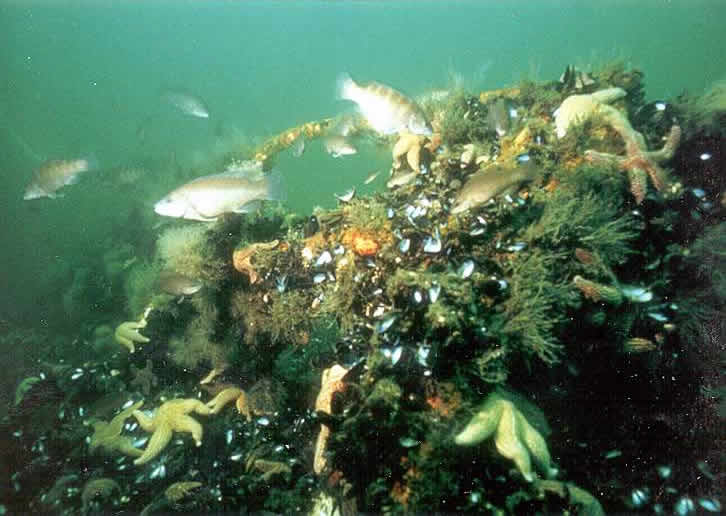N.J. secures federal permits to build 2 artificial reefs

An offshore artificial reef. (NJDEP photo)
New Jersey has secured federal permits to build two new artificial reefs for recreational fishing, state Department of Environmental Protection Bob Martin announced today.
The permit issued by the U.S. Army Corps of Engineers for a reef situated 1.7 nautical miles southeast of the Manasquan Inlet is part of compromise the Christie administration reached between commercial and recreational anglers to have continued access, a state news release said.
The compromise led to the federal government restoring previously suspended funding following concerns that commercial fishing was hampering recreational anglers’ enjoyment of artificial reefs in state waters.
Once completed, the “Manasquan Inlet Reef” will occupy nearly one square mile of sea floor in water ranging from 67 to 74 feet deep. Another reef, already planned for 9.2 nautical miles southwest of the mouth of Cumberland County’s Maurice River, will expand fishing opportunities in the Delaware Bay.
“We are very excited to move forward with this expansion of the state’s network of artificial reefs, which create important habitat for many types of marine life,” Martin said. “By enhancing recreational fishing and diving opportunities, these reefs help boost the state’s tourism economy. We are particularly pleased with the opportunity to develop Delaware Bay’s first reef site, which will help bolster tourism in that region.”
According to the state, recreational fishing generates $1.5 billion in economic benefits in New Jersey annually and directly employs some 20,000 people.
The state, which holds permits for 13 artificial reefs in federal waters and two in state waters that encompass 25 square miles of ocean floor, funds the program through excise taxes on recreational fishing gear and motor boat fuel. The latest permit authorizes the continued operation and development of the program.
Providing a habitat for a variety of marine organisms to grow along with food and habitat for fish and shellfish, the reefs are made of rocks, concrete and steel, and old ships and barges.
“DEP studies have shown that these materials are colonized quickly with organisms such as algae, barnacles, mussels, sea stars, blue crabs, and sea fans that attract smaller fish which, in turn, attract black sea bass, tautog, summer flounder, scup, lobster and other sought-after species,” a 2016 state news release said.
WHYY is your source for fact-based, in-depth journalism and information. As a nonprofit organization, we rely on financial support from readers like you. Please give today.

